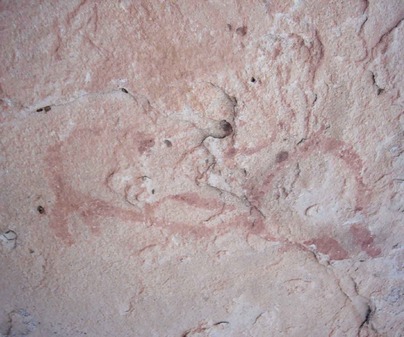Cave Shelters of Rillo de Gallo
World Heritage Coats

Cave Shelters of Rillo de Gallo
Dirección
Cave Shelters of Rillo de Gallo
GPS
40.888170745989, -1.9206629040391
Cave Shelters of Rillo de Gallo
The Cave Shelters of Rillo de Gallo, also known as the "Coats of the Plain are a group of paintings produced in two periods: the Levantine where anthropomorphic figures and animals in possible hunting attitudes can be seen (Unesco World Heritage Site, 1998), and remains of other representations of type schematic The figure of a cruciform figure protrudes from it.
The ensemble is particularly interesting because it presents the Palaeolithic art of the Mediterranean within the limits of its geographical area of extension. That is to say: the Neolithic hunter-gatherer culture was present in the region of Molina de Aragón.
In the central area of the shelter, visible from a certain distance, are the painted figures, eleven in total and diverse in their appearance and constitution, although with an apparent organisation, at least as far as the stylistically older period is concerned.
Five are the most outstanding figures in the central group, all of which can be assigned to a Levantine artistic environment, a denomination that although it may seem distant from the province of Guadalajara, is not so distant if we remember Albarracín or the indoor environments of the above-mentioned cycle.
The first of these is a rest painted of something which should have been more It could be the remains of a female headdress (like the one that appears in Coat I of Bojadillas, in Albacete), which would probably not be out of place with a female figure in profile, given the prominence of its forms and the similarities with the one from the Cañada de Marco, in Teruel, and the one from the El Ciervo shelter, in Dos Aguas.
The rest of the figures in the shelter are fragments of painting difficult to interpretclearly belonging to the schematic cycle, cruciform in the first case and anthropomorphic in the second, in a manifestation of continuity, characteristic of the shelter of the Llano and other inland Levantine sites such as Villar del Humo, in Cuenca.
<< How to get there?
To get to the shelters we leave from Rillo heading north along a local dirt track, after about 2 kilometres (where the ravine opens out into a meadow, next to the water intake hut of the Rillo spring), leaving the Arroyo Viejo to the east, and ascending some 500 metres along a forest path that leads to a replanting of pine trees and a shepherd's hut that is right in front of the Abrigo Rupestre de Rillo I (Cave Shelter of Rillo I).
Although it is possible to access the paintings freely, it is necessary to have the help of those who are more familiar with the terrain to find these cave paintings in Rillo de Gallo, as they are not signposted or protected, and are very difficult for outsiders to find.


